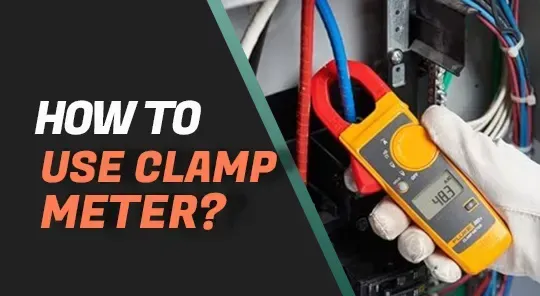How to Use HACCP Temperature Data Loggers to Monitor the Temperature of Food Production Processes
How to Use HACCP Temperature Data Loggers to Monitor the Temperature of Food Production Processes
Every day, the food business supplies us with items that are nourishing and delightful. Food deterioration, contamination, and waste are just a few of the risks and issues associated with the manufacturing of food.New Paragraph
The Importance of Temperature RegulationNew Paragraph
Food producers must use a variety of strategies and methods to ensure the quality and safety of their products in order to overcome these difficulties and risks. Temperature regulation is among the most crucial strategies and methods.
The preservation of food's flavor, texture, and color as well as extending the shelf life of foods all depend on maintaining the proper temperature.
Different techniques, including pasteurization, sterilization, and freeze-drying, can be used to manage temperature. These procedures are essential for extending the shelf life of foods while maintaining their nutritional value and quality.New Paragraph
Precision Matters
To achieve the best outcomes, they also need the temperature to be precisely controlled. Food may not be effective or safe if the temperature is too low. The dish may lose its flavor, texture, or color if the temperature is too high.
You need a dependable and accurate instrument that can measure the temperature in liquids or on surfaces, such as on bottles, cans, or plates of freeze-drying systems, in order to efficiently and precisely monitor the temperature of these operations.New Paragraph
Introducing the Testo 191-T2 and Testo 191-T3 HACCP Temperature Data Loggers
The testo 191-T2 and testo 191-T3 HACCP temperature data loggers are two of the top tools for this purpose, which we will introduce to you in this post.
These tools, which are made to measure temperature in food production operations, have received HACCP International certification. We'll contrast their advantages and features to enable you to select the one that best suits your application requirements.New Paragraph
HACCP Temperature Data Loggers: What Are They?
Hazard Analysis and Critical Control Points is referred to as HACCP. It is a system that locates, assesses, and manages dangers important to food safety.
A hazard analysis, the identification of key control points, the establishment of critical limits, monitoring protocols, remedial measures, verification protocols, and record-keeping are the seven concepts that make up HACCP.
A tool that logs a process's temperature over time is known as a HACCP temperature data recorder.
A probe is used to test the temperature, and a memory is used to store the results. The device can be set up to begin and stop recording at predetermined times or events, such as the start or finish of a procedure.
With the use of software or a casing that connects to a PC, the gadget can also be read out and examined.
To keep track of the temperature during the pasteurization and sterilization stages of food manufacturing, a HACCP temperature data logger is helpful. To ensure the safety and quality of the food, these procedures are crucial control points that must be monitored.
You may confirm that these activities are carried out properly and within the established critical limits by using a HACCP temperature data recorder.New Paragraph
Features and Advantages of the Testo 191-T2 and Testo 191-T3
Two of the top HACCP temperature data recorders on the market are the Testo 191-T2 and Testo 191-T3. Both of these highly accurate tools can be used to keep track of the temperature during the pasteurization and sterilization stages of food manufacturing.
They do, however, have some commonalities and peculiarities that make them more suited to various uses. Some of their qualities and advantages are as follows:
- The testo 191-T2 includes a long, stiff temperature probe that can measure the temperature inside of pasteurized or sterilized bottles or food cans (length: 115 mm, tolerance: 3 mm). The stiff probe is appropriate for these applications because it can tolerate high temperatures and pressures. Additionally, the stiff probe guarantees precise and reliable readings in these applications.
- The testo 191-T3 features a long, flexible probe that is perfect for measuring temperature on plates of freeze-drying systems that maintain food quality and nutrients (775 mm in length, 1.5 mm). The flexible probe is perfect for these applications since it can bend and adapt to various forms and surfaces. In these applications, the flexible probe also makes it simple to insert and remove the device.
- Both devices have 60,000 reading memories and a 20 mm diameter, which makes them tiny enough to fit into bottles, cans, plates, and trays, among other small spaces. This indicates that they do not obstruct the process or occupy much room.
- Thanks to premium components and creative construction, these devices are also strong and long-lasting. They have measuring equipment that is hermetically sealed in a separate stainless-steel enclosure to guarantee dependability and optimum robustness.
- They also contain a useful thread that makes it possible to easily and securely screw the battery onto the device without the need for any tools.
- The battery enclosure is coated in highly temperature-proof polyether ether ketone (PEEK), ensuring that the gadget remains 100% tight even after the batteries have been changed.
Both devices can simultaneously program and read out up to 8 data loggers using the multifunction casing and software, and they both provide PC analysis of measurement data. This implies that controlling and keeping track of your temperature data will take less time and effort.New Paragraph
How to Choose Between Testo 191-T2 and Testo 191-T3
Both the Testo 191-T2 and the Testo 191-T3 HACCP temperature data recorders are superb tools for helping you keep track of the temperature during pasteurization and sterilization procedures in the food manufacturing industry.
You might, however, favor one over the other based on the requirements of your application. When deciding between them, keep the following things in mind:
- The two devices' stiff or flexible probes, depending on your application demands, make up the fundamental distinction between them.
- The testo 191-T2 with its stiff probe, which can endure high temperatures and pressures, may be preferred if you need to measure the temperature in bottles or food cans that have undergone pasteurization and sterilization operations.
- You might select the testo 191-T3 with its flexible probe if you need to measure temperature on plates of freeze-drying systems that maintain food quality and nutrients because it can bend and adapt to diverse forms and surfaces.
- The length of the probes on the two devices—whether they are long or short—is another distinction.
- The testo 191-T3 with its long probe (length 775 mm), which can reach further than the testo 191-T2 with its small probe (length 115 mm), may be used if you need to monitor temperature in deep objects or difficult-to-reach regions.
- However, the testo 191-T2 with its short probe, which can fit better than the testo 191-T3 with its long probe, can be preferred if you need to monitor temperature in shallow objects or easily accessible spots.
- The thickness or thinness of the probes on the two devices is another distinction. The testo 191-T3 with its thin probe (1.5 mm), which may penetrate easier than the testo 191-T2 with its thick probe (3 mm), may be used if you need to monitor temperature in narrow objects or small apertures.
However, the testo 191-T2 with its thick probe, which can cover more area than the testo 191-T3, can be preferred if you need to monitor temperature in wide objects or huge apertures.New Paragraph
Conclusion
Two of the top temperature data loggers for HACCP have been compared in this article: the Testo 191-T2 and Testo 191-T3. Both of these high-precision instruments can be used to keep track of the temperature during the pasteurization and sterilization stages of food preparation.New Paragraph






